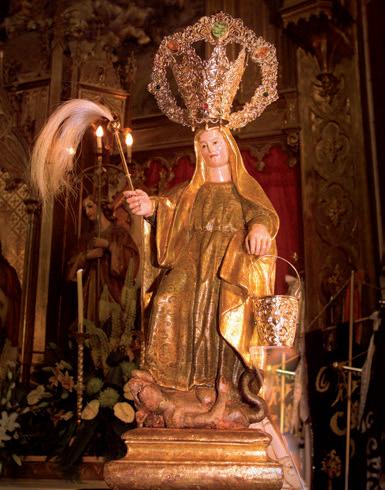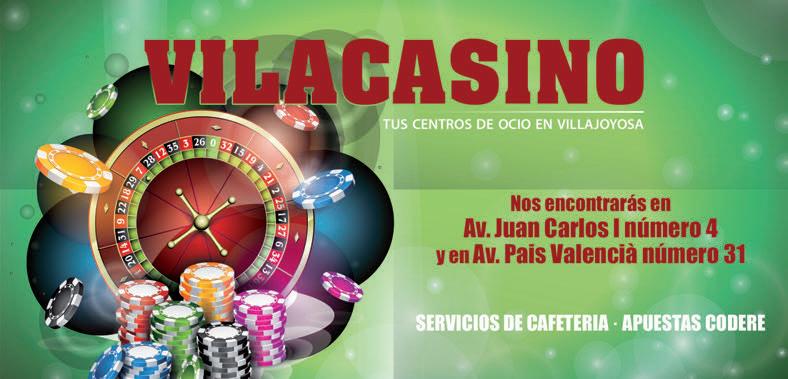
6 minute read
Monuments, museums and places of interest
MonUmeNtos, mUseos y lUgares de iNterés
CONJUNTO HISTÓRICO-ARTÍSTICO DEL CASCO ANTIGUO (Bien de Interés Cultural)
Advertisement
El casco antiguo mantiene un grado de conservación envidiable. Su carácter tradicionalmente marinero y comercial ha determinado su particular arquitectura, con planta y distribución típica de la época de la reconquista. En las excavaciones de la zona se han encontrado restos de la época ibérica y de procedencia fenicia o egipcia. En el conjunto histórico artístico es necesario visitar la iglesia-fortaleza de la Asunción, perteneciente al gótico catalán, y el conjunto de las calles Colón y de Canalejas, donde se conservan edificios con diferentes estilos arquitectónicos que abarcan los siglos XIX y XX. Tampoco se puede pasar por alto en la visita uno de los iconos de la ciudad: las casas colgantes policromas sobre el río Amadorio.
HISTORICAL-ARTISTIC OLD QUARTER OF THE CITY BIC (Asset of Cultural Interest) declared
The Old Quarter of the town preserves an enviable degree of conservation. Its traditionally maritime and comercial caracter has determined its particular architecture, with plant and distribution typical of the time of The Reconquest. In the excavations of the area have been found remains from the Iberian time and of Phoenician or Egyptian origin. The Church and Fortress of the Assumption in the HistoricalArtistic quarter of Catalan Gothic Style is worth to visit. The streets Colón and Canalejas conserve buildings of different architectural styles, which range from the 11th to the 20th Century. Another of the essential most beautiful and iconic attractions of the town are the colorful houses hanging above the Amadorio river..
MonumeNts, mUseUms AND PLACES OF INTEREST
Copyright QC Creativos

9

IGLESIA DE NTRA. SRA. DE LA ASUNCIÓN (Bien de Interés Cultural)
De estilo gótico catalán, el cual se caracteriza por la sencillez decorativa, el templo constituye uno de los tres ejemplos de Iglesia-Fortaleza existentes en la provincia de Alicante.
Con el paso del tiempo se han ido añadiendo elementos de distinta época: Portada principal, Capilla de La Purísima Concepción y la muy preciada Capilla de Santa Marta, estancia que se adhiere al edificio primitivo en el s. XVIII.; y que con un exquisito gusto barroco, rompe con la austeridad del resto del edificio. Esta concentración de ornamentación viene determinada por ser ésta la estancia que alberga la imagen de la patrona de Villajoyosa. Aquí podemos apreciar dos lienzos que
OUR LADY OF ASSUMPTION CHURCH. Asset of Cultural Interest
The Church of Catalan Gothic style, typified by simple decorations, was built in 16th century.
The Church is one of the three examples of a fortresschurch in the province of Alicante. As time went on, some elements from different ages were added such as: Main Front, Purísima Concepción Chapel and the very valuable Santa Marta Chapel, room that was adhered to the original building at the XVIII Century.
Santa Marta Chapel was built under an excellent baroque style which breaks the austerity of the rest of the building. The reason of this concentrated ornamentation is

10

representan dos momentos históricos que hoy en día siguen celebrándose por todo lo alto. -El Milagro de las Lágrimas de Santa Marta (08-05-1653). -La aparición de Santa Marta para auxiliar al pueblo vilero del ataque de los piratas berberiscos el veintinueve de julio de mil quinientos treinta y ocho.
Cabe destacar la presencia de dos inscripciones romanas. Una de ellas localizada en el interior de la iglesia y reutilizada como pila de agua bendita, la otra situada en el exterior formando parte de la pared de la capilla de Nuestra Patrona.
MURALLAS (Bien de Interés Cultural)
El recinto amurallado se destruyó parcialmente durante la Guerra de Sucesión, por lo que actualmente se pueden observar algunos de los lienzos que se mantienen, generalmente incorporados a las viviendas más antiguas del núcleo urbano.
Dicho lienzo, construido en el siglo XVI se constituye como un ejemplo inaudito de arquitectura defensiva pre-abaluartada. that the image our patron saint is in this chapel. Here we can see two parietal canvases representing two historical periods that nowadays still celebrated: •The Miracle of Santa Marta Tears occurred on 8th May 1658. •The apparition of Santa Marta to protect the local people from the attack of the Berber pirates on 29th July 1538.
About the Church it is to be said, that there are two roman inscriptions. One of them is inside the church, and is used as a water holy basin; the other one is outside, making part of the wall in the chapel.
WALLS
In the middle of the 16th century, after its destruction by the Turkish armed forces, the new walls that we can see nowadays (east and west sides) were built. The towers that constitute the walled enclosure have a solid circular base with an upper chamber with large cañoneras.


11
A mediados del s.XVI, tras su destrucción por la armada turca, se construyeron las nuevas murallas en las que destacan los lienzos de poniente y de levante. Las torres que componen el recinto amurallado, son de planta circular con cuerpo macizo y una cámara superior con grandes cañoneras.
OTROS MONUMENTOS
Torres Vigía s. XVI (Bien de Interés Cultural): Torre de El Xarco y Torre del Aguiló (En la Torre de L’Agiló hay una

12


ruta autoguiada con paneles interpretativos), destinadas a la prevención de ataques piráticos, y complementadas por cuatro torres renacentistas que protegían la huerta tradicional.
Torre de Sant Josep (Bien de Interés Cultural). La mayor de las tres torres funerarias romanas mejor conservadas de España. Conserva el recinto funerario y se han recuperado los jardines funerarios. Recinto abierto en horario diurno. Dispone de paneles interpretativos sobre el monumento y los jardines funerarios. Gratuito.
La Ciudad Romana de Allon, una de las nueve de la Comunitat Valenciana. Diferentes paneles por la ciudad informan de lugares y hallazgos importantes.
El pecio Bou Ferrer: es el mayot pecio romano en excavación del Mediterráneo. Puedes conocer todos los detalles del cargamento y características del barco en la visita al Taller Bou Ferrer y de la navegación antigua de Vilamuseu.
La Malladeta: visita el yacimiento arqueológico del santuario íbero a través de un itinerario autoguiado y disfruta de las maravillosas vistas de la Playa del Paraíso y los acantilados de la Malledeta. También encontrarás la torre estudio del Doctor José María Esquerdo, del siglo XIX y la villa Giacomina, ejemplo de arquitectura historicista de principios del siglo XX.
Ver programación (visitas guiadas, actividades para niños, etc.) en www. vilamuseu.es
OTHER MONUMENTS
Watchtowers (BIC Monuments)
destined to prevent the pirate attacks:
Torre de El Xarco and Torre del Aguiló (in the surrounding área of the tower there is a self-guided route with interpretive panels)
San José Tower (BIC declared)
of Roman origin, is a funeral edification integrated into a necropolis. It preserve the funeral enclosure and the gardens have been recovered. The enclosure is open during daytime annd it has interpretive display panels of the monument and gardens. Free entrance.
Pecio Bou Ferrer. The Pecio Bou Ferrer is the largest roman uderwater shipwreck in the Mediterranean. You can know all the details about the shipment and characteristics of the boat visiting the Bou Ferrer and Ancient Navigation Workshop in VILAMUSEU.
La Malledeta. Visit the archaelogical site of the Iberian sanctuary through a self-guided itinerary enjoying the wonderful views of the Paraíso beach and the cliffs of “La Malladeta”. You will also find the 19th century tower-study of Dr. José María Esquerdo and Villa Guiacomina, an example of historicist architecture from the early 20th century.
For more information about guided tours, activities for children, etc... visit www.vilamuseu.es


13








